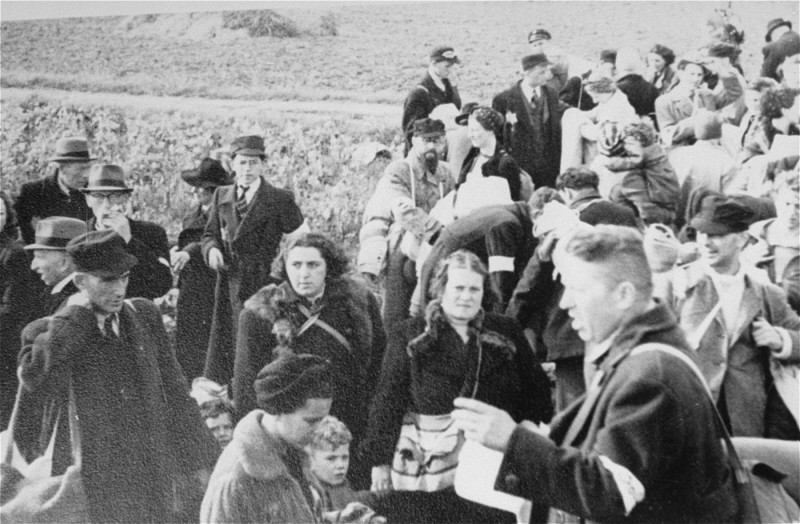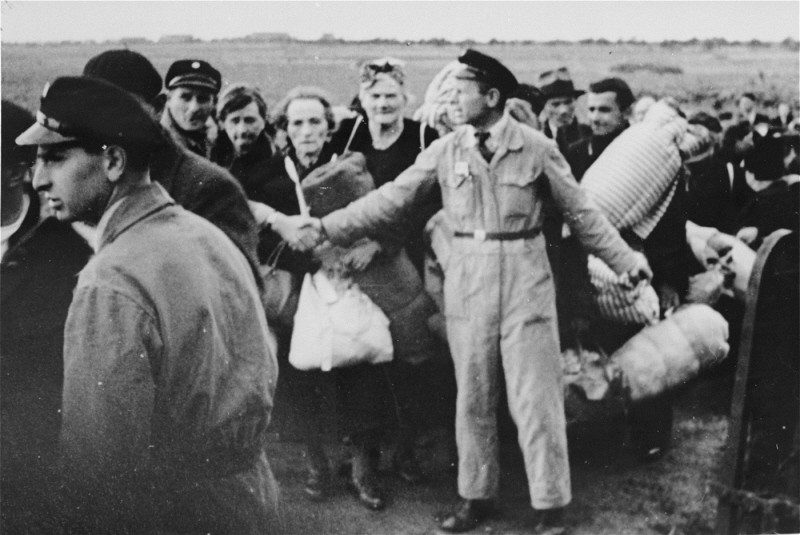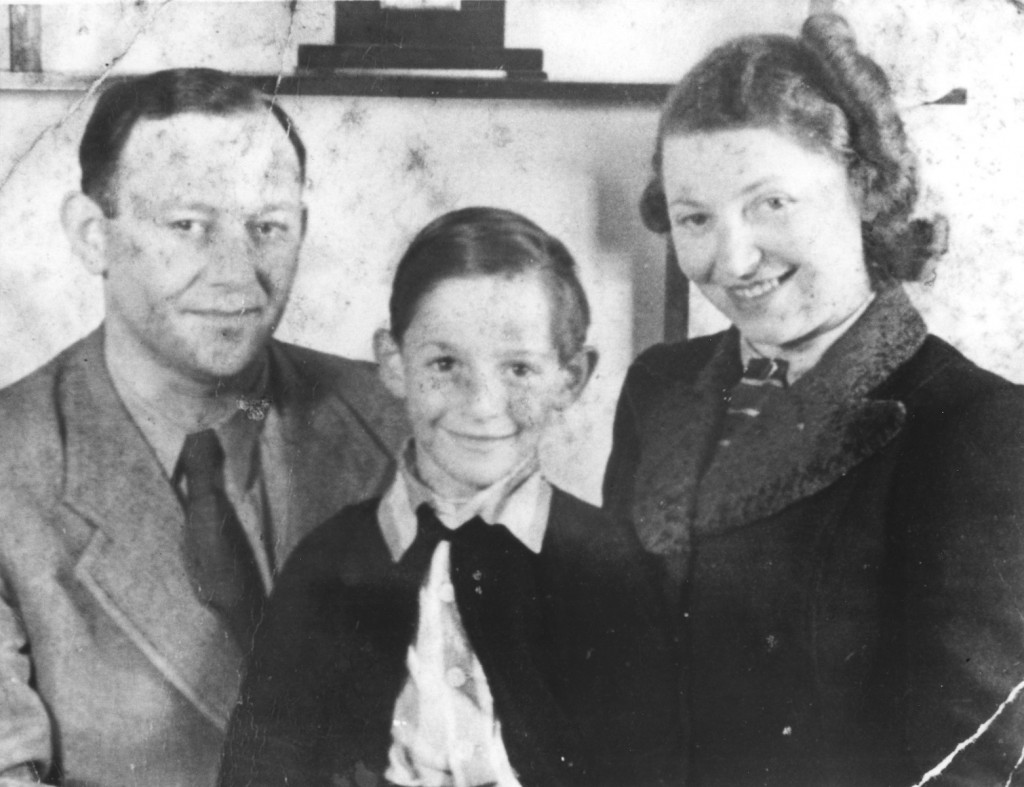
Westerbork
Between 1933 and 1945, Nazi Germany and its allies established more than 44,000 camps and other incarceration sites (including ghettos). The perpetrators used these locations for a range of purposes, including forced labor, detention of people deemed to be "enemies of the state," and mass murder. Millions of people suffered and died or were killed. Among these sites was the Westerbork transit camp in the Netherlands.
Key Facts
-
1
Westerbork was originally established in 1939 by the Dutch before the German invasion of the Netherlands. It began as a refugee camp for German Jewish refugees who had fled Nazi persecution.
-
2
Nazi Germany invaded and occupied the Netherlands in May 1940. In July 1942, German officials took over and transformed Westerbork into a transit camp for Dutch Jews. This meant that Westerbork became a site where Jews were temporarily held before deportation.
-
3
More than 100,000 Jews passed through Westerbork. Most were deported to killing centers at Auschwitz-Birkenau and Sobibor where they were murdered.
From 1942 to 1945, Westerbork was a transit camp (Durchgangslager) located in the German-occupied Netherlands. As a transit camp, Westerbork served as a temporary collection point for Jews in the Netherlands prior to their deportation by the Germans to killing centers and concentration camps in the east.
For Dutch Jews, Westerbork was a key location in their experience of the Holocaust. More than 100,000 Jews spent time in the Westerbork transit camp prior to their deportation. Most were sent to killing centers at Auschwitz-Birkenau or Sobibor. Only 5,000 Jews who passed through Westerbork survived.
Location
The Westerbork camp was located in the Dutch countryside in the northeastern part of the Netherlands. It was in the Dutch province of Drenthe, near the towns of Westerbork and Assen. This location was noteworthy because it was near the German-Dutch border and far from the major cities of Amsterdam, Rotterdam, and The Hague.
Westerbork as Refugee Camp Administered by the Dutch, 1939–1942
The Dutch government established a camp at Westerbork (Centraal Vluchtelingenkamp Westerbork) in 1939 to intern Jewish refugees, mostly from Germany. The first refugees arrived in Westerbork in October of that year. In April 1940, there were approximately 750 Jewish refugees housed in the camp. Some of them were German Jews who had been passengers on the St. Louis ship.
In May 1940, Nazi Germany invaded and occupied the Netherlands. In the first two years after the invasion, Westerbork continued to function as a refugee camp. From May 1940 to July 1942, the camp remained under Dutch administration. Under the Dutch, conditions were fairly good.
The German Transformation and Administration of Westerbork
In early 1942, the Germans began preparations to deport Dutch Jews to killing centers in the east. At this time, they required all Dutch Jews to be concentrated in Amsterdam. They also decided to intern all non-Dutch Jews in Westerbork. There were approximately 20,000 non-Dutch Jews residing in the Netherlands, most of them refugees from Germany.
In July 1942, the Germans took over the administration of Westerbork and transformed it into a transit camp called Police Transit Camp Westerbork (Polizeiliches Durchgangslager Westerbork). It was under the supervision of the Commander of the Security Police and SD for the Netherlands (Befehlshaber der Sicherheitspolizei und des SD Niederlande). The Germans built more barracks and expanded the camp, so that it could hold more people. They also built a barbed wire fence around the camp and enforced much stricter rules.
The camp administration was headed by a German commandant. Westerbork had three commandants, all of whom were SS officers: Erich Deppner (July 1942–September 1942); Josef Hugo Dischner (September–October 1942); and Albert Konrad Gemmeker (October 1942–April 1945). German SS men and a rotating group of Dutch civilian and military police guarded the camp. In addition to the German and Dutch personnel, a Jewish police force (called the Ordedienst or the OD) kept order in the camp.
Westerbork as Transit Camp, 1942–1945
In July 1942, the Germans began operating Westerbork as a Jewish transit camp (Judendurchgangslager). Transit camps functioned as temporary holding facilities for Jews awaiting deportation. These camps were usually the last stop before deportation to a killing center.
From 1942 to 1944, the majority of Jews in the Netherlands were sent to Westerbork before they were deported to killing centers in German-occupied Poland. Most Jews stayed in the camp for only a short period of time.

At first, deportations left twice a week. But beginning in 1943, deportation transports left every Tuesday. The decisions about the timing and destination of these transports were made in Berlin. However, the Westerbork commandant decided who would be deported.
In some cases, the transports left Westerbork on passenger rail cars. At other times they left on freight cars.
Deportation Transports from Westerbork
The first deportation transport left Westerbork on July 15, 1942, for Auschwitz-Birkenau. This first transport was followed by more than 90 subsequent transports to Auschwitz-Birkenau, Sobibor, Theresienstadt, and Bergen-Belsen. Most of those people deported to Auschwitz-Birkenau and Sobibor were killed upon arrival.
From July 15, 1942 until September 13, 1944, the Germans deported approximately 100,000 Jews from the Netherlands via Westerbork.
- More than 55,000 Jews and 245 Roma were deported to Auschwitz-Birkenau;
- 34,313 Jews were deported to the Sobibor killing center;
- 4,000–5,000 Jews were deported to Theresienstadt;
- more than 3,500 Jews were deported to Bergen-Belsen concentration camp.
There were also several small deportation transports to the Ravensbrück and Buchenwald concentration camps.
Transports were a traumatic experience for Jews in Westerbork. Witness testimonies mention confusion, distress, and brutality. For example, Dutch-Jewish journalist Philip Mechanicus, who kept a diary of life in Westerbork, described a transport that took place on June 1, 1943. He wrote:
The transports are as nauseating as ever.… Men, quiet, stone-faced; women, often in tears. The elderly: stumbling, faltering under their burden, tripping on the bad road sometimes into pools of mud…. Whoever hesitates, whoever dawdles, is being assisted; sometimes herded, sometimes shoved, sometimes beaten, sometimes punched, sometimes persuaded by a boot, quickly shoved aboard the train…. When the cars are full, the prescribed number of deportees having been loaded, the cars are sealed…. The commandant signals the departure: a wave of the hand. The whistle sounds … a heart-rending sound is heard by everyone in the camp. The grungy snake, now fully loaded, crawls away.
The transport Mechanicus describes included 3,006 people. It arrived at the Sobibor killing center on June 3, 1943. Jules Schelvis, who had spent six days in Westerbork prior to deportation, was the only known survivor of this transport.
The best known person to pass through Westerbork was Anne Frank. After the Franks’ hiding place was discovered on August 4, 1944, the Franks and the other occupants of the Secret Annex, where the Frank family spent two years in hiding, were sent to Westerbork. They were then deported to Auschwitz-Birkenau on September 3, 1944, in a transport with 1,019 deportees.
The Long Term Residents of Westerbork
Because Westerbork’s primary role was as a transit camp, most Jews only spent a short period of time there. However, there was also a long-term camp population of approximately 2,000 people. The longer term camp prisoners were mostly German Jews, Jewish council members, camp employees, and certain other categories of persons exempt from deportation. The Germans encouraged camp activities by this group, including metalwork, health services work, and cultural activities. In the end, however, most of these inmates were also sent to the concentration camps and killing centers.
Michael Fink and his parents Manfred and Herta were three of these long-term Westerbork residents. The Finks had fled Nazi Germany on the St. Louis in May 1939. When the ship returned to Europe, the Finks were sent to the Netherlands. At first they lived in Rotterdam. But after the German invasion of the Netherlands in 1940, the family was interned in the Westerbork refugee camp. Michael attended school in Westerbork and his father managed the camp’s laundry facility. The Finks remained in Westerbork until spring 1944, when they were deported to Theresienstadt. Michael and his mother survived and were liberated in Theresienstadt, but Michael’s father Manfred died after being deported to Auschwitz-Birkenau and other concentration camps.

Liberation of Westerbork
In early April 1945, as Allied troops approached the camp, the Germans abandoned Westerbork. Westerbork was liberated on April 12, 1945, by Canadian forces who found 876 inmates there.
Critical Thinking Questions
- Research the different types and purposes of camps. Where else were transit camps located?
- How did the functions of the camp system expand after World War II began?
- Did the outside world have any knowledge about the camps? If so, what, if any, actions were taken by other governments and their officials?
- What pressures and motivations might lead individuals and institutions to collaborate with an occupying regime?
- Learn more about the fate of Jews in the Netherlands.

